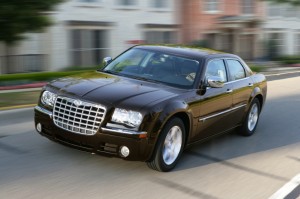Nearly one in five new-vehicle buyers who avoid a particular vehicle model cite their concern over the future of the brand as a reason for avoidance, according to the latest J.D. Power and Associates 2009 Avoider Study released today.
The study has negative implications for General Motors Company and Chrysler Group brands as the reorganized companies try to put bankruptcy behind them and promote new cars and light trucks in what remains a gridlocked marketplace.
While the top three avoidance reasons in 2009—styling, price and perceived reliability—remain unchanged from 2008, concern over the future of the brand is the fourth-most-frequently mentioned reason for avoiding a particular model. Included in the study for the first time, this reason was mentioned by 18% of what Power terms avoiders.
The study, now in its seventh year, examines the reasons consumers fail to consider or avoid particular models when shopping for new vehicles.
Among brands that were avoided due to concerns over their future viability, the top five are domestic brands:
- Chrysler
- Dodge
- Hummer
- Pontiac and Saturn
In the case of the latter two, consumers proved prescient.
At the time of the study this past summer, GM had announced that Hummer, Pontiac and Saturn would not be part of “New GM,” although buyers were being sought for the brands.
Since then, only Hummer appears to have a chance of surviving, as Pontiac has already built its last car. A deal for the purchase of Saturn by the Penske Automotive group fell apart at the last moment when the Renault Board of Directors rejected a Carlos Ghosn-backed plan to supply Saturn with Korean-built vehicles.
Ford, Lincoln and Mercury had much lower levels of avoidance because of concerns over the brands’ futures. This could be largely attributable to the fact that Ford did not enter bankruptcy proceedings, although it did receive billions of dollars in taxpayer money to retool its plants and develop alternative vehicles.
“While Chrysler and GM struggled to gain the confidence of some consumers, Ford actually made strides in improving perceptions of its products and reducing year-over-year avoidance in the critical areas of quality and reliability,” said Kerri Wise, director of automotive research at J.D. Power.
Buyers who avoided a particular brand due to concern about the brand’s future are also more likely to avoid the brand because of reliability, rapid depreciation, the manufacturer’s reputation and poor quality, when compared with avoiders who did not express concern with a brand’s future.
The shaky economy and jobless recovery also negatively affected avoidance rates for import brands. Although imports have increased 2009 year-to-date market share by three percentage points, two of them from Korean Hyundai, compared with 2008, a “Buy American” sentiment has grown from 2008 among domestic buyers who avoid imports.
In 2009, nearly 60% of domestic buyers who avoided an import model said they “didn’t want a foreign/import vehicle” as a reason for avoidance—compared with 46% in 2008. “
Several import models are actually produced in the U.S. but are still avoided due to foreign origin,” said Wise. “To combat this growing sentiment against import vehicles, import brands that produce vehicles in the U.S. must continue to promote and emphasize their domestic ties, as well as other product advantages.”
The study, which also examines the performance of 19 all-new models, finds that one of the biggest obstacles to consideration for all-new model launches is a lack of awareness among consumers. While launches such as the Chevrolet Camaro and Dodge Challenger have high levels of awareness, due to both their past generations and consumer buzz over the new releases, some new vehicles are lost in the ether.
“Creating awareness and an identity in the crowded automotive market takes both time and money,” said Wise. “A new-vehicle buyer who purchases in a segment in which an all-new model competes and doesn’t even know that the new model exists presents an obvious concern for future sales of that model.”
Styling is also a critical element of consideration for all-new model launches. The study finds that the Audi Q5, Dodge Challenger, Kia Soul and Pontiac G3 (too bad about that one for GM) are “universally desired,” meaning that buyers are driven to purchase them due to styling and avoiders are not turned off by the styling.
On the other hand, some models appear to be polarizing when it comes to styling, including models such as the Ford Flex and Nissan Cube. While buyers of these models are influenced to purchase due to styling, this same styling causes many consumers to avoid these models.
The 2009 Avoider Study is based on responses from nearly 45,000 owners who registered a new vehicle in May or June 2009. The study was conducted during August through October 2009.

